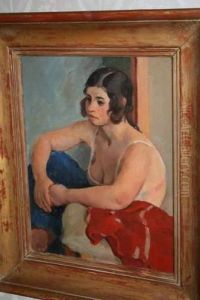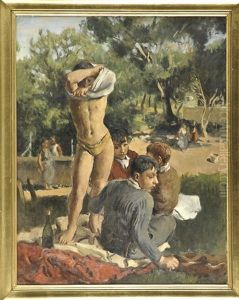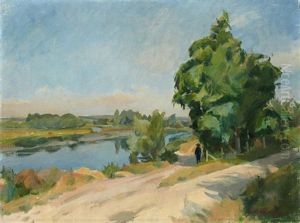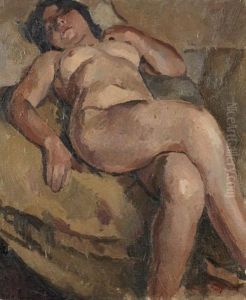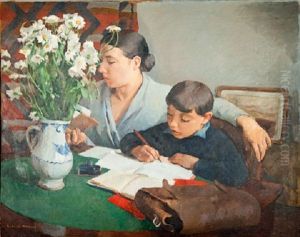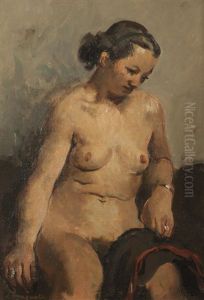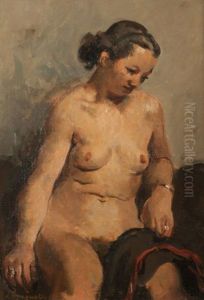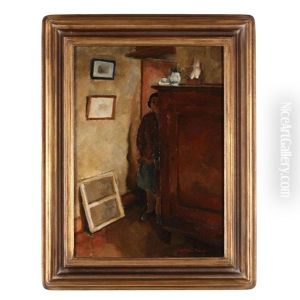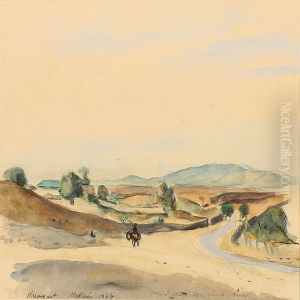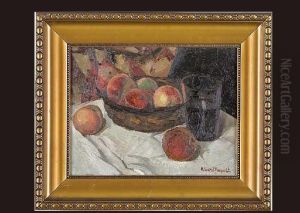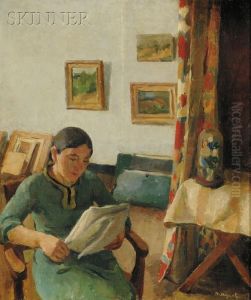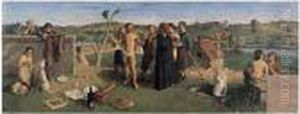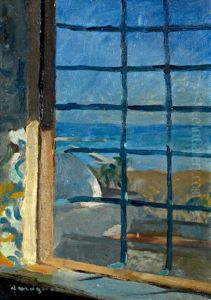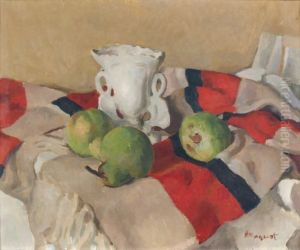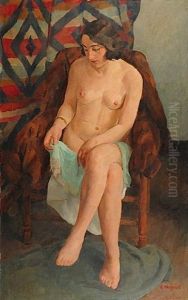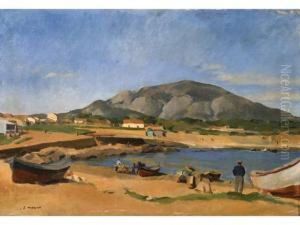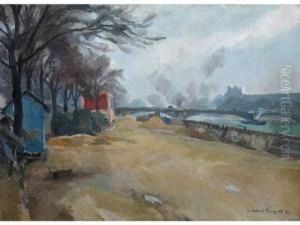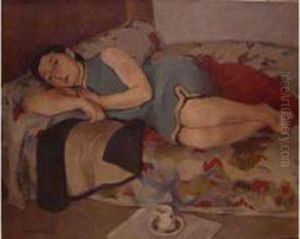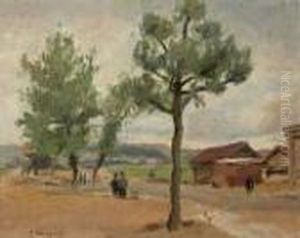Richard Maguet Paintings
Richard Maguet was a French artist known for his paintings, illustrations, and engravings. Born in 1906 in the small town of Évron, in the Pays de la Loire region of France, Maguet developed an early interest in the arts. His talent was evident from a young age, and he pursued formal education in art, eventually moving to Paris to further his studies. In Paris, Maguet became part of the vibrant artistic community, absorbing influences from contemporaries and the rich cultural environment of the city.
Maguet's early work was marked by a focus on traditional subjects, including landscapes, portraits, and still lifes. However, as his career progressed, he began to experiment with more abstract forms and themes. His style evolved, showing influences from Cubism and Surrealism, though he never fully committed to a single artistic movement. Maguet's versatility across different mediums was notable, with a significant body of work comprising engravings and illustrations, in addition to his paintings.
Throughout the 1930s and 1940s, Richard Maguet exhibited his work extensively in France and abroad, gaining recognition and accolades for his unique approach to form and color. His work was celebrated for its emotional depth and technical mastery. Despite the challenges posed by World War II, Maguet continued to create, and his post-war period was marked by a deepening of his exploratory approach to art.
In the later years of his career, Maguet became increasingly interested in the relationship between art and nature, a theme that permeated his work during this period. His paintings from these years are characterized by a harmonious blend of abstraction and realism, often inspired by the natural landscapes of his native France.
Richard Maguet passed away in 1998, leaving behind a legacy as a prolific and innovative artist. His contributions to French art are remembered for their breadth and depth, spanning a wide range of subjects and styles. Maguet's work continues to be celebrated and studied for its impact on the development of modern art in France and beyond.
